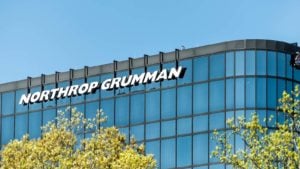Similarly, war in the Middle East could spread further throughout the region dragging the superpowers into a head-to-head conflict. Furthermore, tensions between the U.S. and China over Taiwan are also heightened.
With so many hotspots that have erupted around the world in the last four years, it is surprising defense contractors aren’t doing better. Most defense stocks badly lag the S&P 500.
While this is possibly because the market feels this is a period of peak earnings that is keeping investors away or runaway government deficits making the $850 billion defense budget unsustainable, there are several undervalued defense stocks ripe for picking. Let’s look at three of the best options.
Boeing (BA)

Choosing Boeing (NYSE:BA) as an undervalued defense stock may seem comical considering the woes the aircraft manufacturer has with its commercial aircraft business. Although Boeing’s commercial side is typically its biggest (it represented almost 44% of total revenue in 2023) the plane maker’s defense side accounted for 42% of first-quarter revenue and was up 6% year over year. Commercial operations accounted for just 28% as sales plummeted 31% year-over-year due to its well-publicized issues.
Beyond Air Force One and Two for the U.S. president and vice president, Boeing military aircraft include the C-17 Globemaster III, the B-52 bomber and F/A-18 and F-22 fighter jets.
Boeing stock has bounced 15% off its lows but remains 30% below its 52-week high. It also sits 58% below its all-time high set in 2019. The plane maker, though, recently accepted a $243 million fine for pleading guilty to fraud regarding several plane crashes several years ago. As the fine is de minimis relative to its revenue, if approved, the aircraft stock can move beyond this sorry chapter in its history.
The company also said it would reacquire its parts manufacturer Spirit AeroSystems (NYSE:SPR) for $4.7 billion in a bid to have greater control over its manufacturing.
But the fact is, Boeing is simply too big to fail. It is one of just two major commercial aircraft manufacturers along with the U.K.’s BAE Systems (OTCMKTS:BAESY). Because Boeing is so critical to U.S. civilian and military aviation, its low point now represents an opportunity to buy an undervalued defense contractor.
Lockheed-Martin (LMT)

Lockheed-Martin (NYSE:LMT) is the largest U.S. defense contractor. It generates almost $68 billion annually from government contracts and is responsible for some of the most important military programs.
Among its priorities are F-16 and F-22 fighter jets, F-35 stealth fighters, the Patriot missile system, Javelin anti-tank weapons systems, Black Hawk helicopters, Trident ballistic missiles and NASA’s Orion spacecraft. Many of these weapons and defense systems are also sold to foreign governments.
If there is a war anywhere, it is likely you will find Lockheed-Martin aircraft and defense systems at play. First-quarter revenue grew 14% to $17.2 billion with F-35 revenue rising almost 10% to $6.9 billion. Missile system sales were up 25% from last year.
Although earnings dropped as questions about its fighter jet contracts rose, Lockheed secured a contract extension last month for the F-35 that should boost operating results. It remains a very profitable company that will be integral to the U.S. military for years.
The defense contractor’s stock trades at 16 times next year’s earnings estimates and 17 times free cash flow. Lockheed pays a dividend yielding 2.8% annually and has raised the payout for 21 consecutive years making it an attractive undervalued defense stock to buy.
Northrop Grumman (NOC)

Northrop Grumman (NYSE:NOC) is one of the world’s largest weapons manufacturers and military technology providers. It is arguably best-known for its flying wing-shaped B-2 stealth bomber. Its B-21 Raider will eventually replace the B-2. Northrop was also the sole bidder for the government’s Ground Based Strategic Deterrent intercontinental ballistic missile system that will replace existing Minuteman missiles.
The defense contractor’s stock is down 8% over the past year, though first-quarter revenue rose 8% to $10 billion and earnings jumped 15% to $6.32 per share. Northrop also has a shareholder-friendly policy of returning to investors most of the free cash flow it produces through stock buybacks and dividends. That amounted to $1.5 billion in the first quarter.
The undervalued defense stock has paid a dividend every year since 1990 and has raised the payout consistently since 2004. The dividend currently yields 1.8% annually.
Because this solid defense player still has a long runway of growth ahead of it, the beaten down share price makes it a buy in July.
On the date of publication, Rich Duprey did not hold (either directly or indirectly) any positions in the securities mentioned in this article. The opinions expressed in this article are those of the writer, subject to the InvestorPlace.com Publishing Guidelines.
On the date of publication, the responsible editor did not have (either directly or
indirectly) any positions in the securities mentioned in this article.
Rich Duprey has written about stocks and investing for the past 20 years. His articles have appeared on Nasdaq.com, The Motley Fool, and Yahoo! Finance, and he has been referenced by U.S. and international publications, including MarketWatch, Financial Times, Forbes, Fast Company, USA Today, Milwaukee Journal Sentinel, Cheddar News, The Boston Globe, L’Express, and numerous other news outlets.
